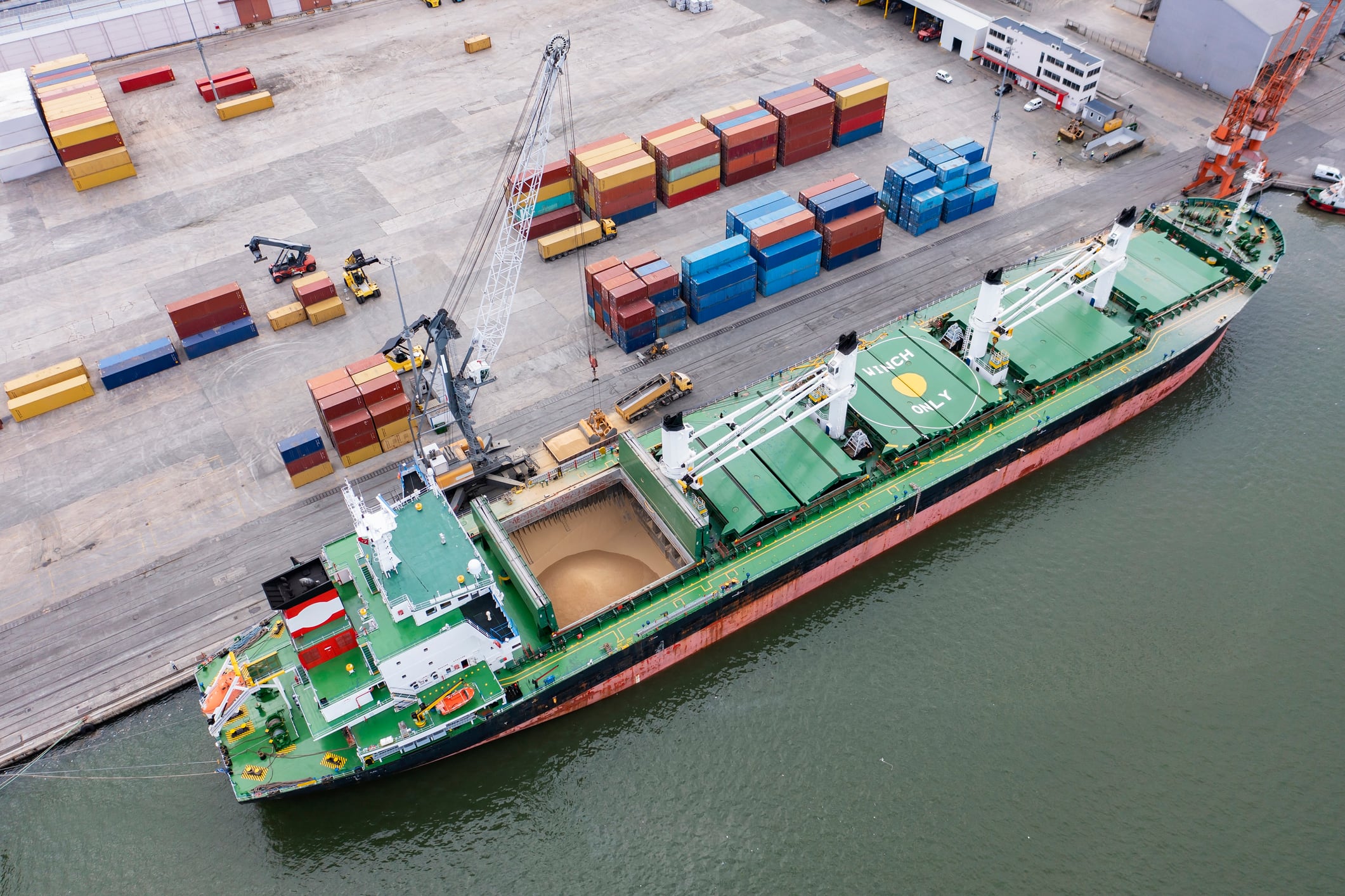The agrifood sector is worth £146.7 billion, with food and drink exports worth at least £24.4 billion. In 2024, the UK exported more than £14 billion in food and drink to the EU – up 1% in current prices since 2023 – with its largest EU export partners in 2024 being Ireland (£4 billion), France (£3 billion) and the Netherlands (£2 billion).
The largest percentage increases in current prices in food and drinks exports to EU members in 2024 were, Bulgaria up 37% (up £17 million), Hungary up 28% (up £10 million), and Luxembourg up 27% (up £3 million).
Food and drink manufacturing businesses looking to capitalise on the growing export market can turn to the UK government’s own Department for Business and Trade (DBT). Exporters can access the full suite of DBT support through its website, online Export Academy programmes and series of peer-to-peer networking events around the UK.
“As a pro-business government, we support exporting to the world, whether companies are new to selling internationally or have been doing it for years,” said a DBT spokesman. “Our free guidance, tools and services can help businesses expand into new markets.
“Strong trade flows support the UK’s food security, business resilience and offer consumers choice and affordability. We support our exporters to capitalise on established demand in overseas markets, and those with rapidly growing middle classes such as in the Asia-Pacific.”
DBT offers a range of support for businesses that want to start exporting or expand into new markets. In a recent column, the department provides clarity on the areas that it covers and the support it can offer to food and drink manufacturers.
Who to target?
But while there is a wealth of support tools available to help food and drink businesses get into the exporting game, there’s still the question of what markets to target and avoid – especially when facing a boiling pot of macroeconomic turmoil caused by tariff hikes, war and extreme weather events.
Nicola Thomas, industry adviser and director of the UK Food & Drink Exporters Association, said a key factor in countering ever-evolving international trading headwinds is to take a strategic approach to building your export market portfolio.
“Diversified global expansion improves your risk-mitigation strategies, especially in the long-term as the losses caused by a crisis in one market or region may be balanced out by your presence in others,” she said.
“If you don’t export at all, only operate in one or two countries or a single region – for example, the EU, North America or Asia – you can find yourself overly reliant on a small number of customers, and if consumer spending dives or your category stagnates, you will be very exposed.”
With the UK at the forefront of many up-and-coming retailing and product trends, food and drink manufacturers have plenty of opportunities to extend the lifecycles of – and revenues from – their current ranges by expanding overseas in markets where their product category is moving from niche to mainstream.
What’s more, the knowledge, skills and experience gained from exporting to one country can often be leveraged to enhance wider NPD, business innovation and competitive advantage.
Pools of new customers
“For example, you may find that consumers in some geographies simply don’t have the disposable income to pay the premium retail price your products need to command to be profitable,” Thomas explained. “A reformulation with cheaper ingredients or smaller pack sizes could, however, unlock access to significant pools of new consumers – and revenue streams – in multiple markets.”
Manufacturers looking to export are advised to start compiling a ‘long list’ of potential markets based on their own company goals, products, target consumers and brand aspirations.
These could be drawn from countries where you have existing sales, where enquiries are originating from, where your competitors are active, the UK’s top export markets, and where we have free trade agreements – for example, Australia and New Zealand.
“Score each country on your list against a relevant set of criteria for your products to identify some initial markets of interest,” Thomas continued. “These will be very different if you are selling energy drinks to sporty millennials, luxury confectionery for gift-giving or private label frozen pizzas aimed at families. Examples of criteria could be spending power, demographics, urbanisation, infrastructure maturity, trade barriers and enablers.”
Having identified a range of initial markets that warrant further investigation, a deeper dive into data for your category will help you obtain more meaningful indicators around opportunities – or conversely, pick up clues that a market you thought had promise is not so attractive.
Having identified your preferred export market, the next step is to work out how to get food to its destination. While it may be simple to ship fresh goods in trucks and via ferries, is it the most sustainable course of action for your business?
The same can be said about food and drink coming into the country. The UK is not entirely self-sufficient and relies on its trade partners to make up the deficit – after all, it’s hard to find bananas growing in this country.
When both importing and exporting, how can you be sure that your supply chain is as green as it can be?
A greener supply chain
Tom Southall, deputy chief executive of the Cold Chain Federation, noted that the UK relies heavily on imports for its food supply – only around half our food requirement (54%, Defra) is produced domestically. As such, international food trade will continue to play a critical role in ensuring the health of the nation in the future.
The UK food and drink supply chain relies on a ‘just-in-time’ system to maintain a constant flow of fresh produce while minimising waste. To do so, food and drink logistics relies on temperature-controlled vehicles and storage – both of which can contribute greenhouse gas emissions.
But any assessment of the environmental impact of temperature-controlled logistics should begin with the acknowledgement of the role the cold chain plays in reducing post-harvest food waste, Southall explained.
“A recent study in ‘Environmental Research Letters’ estimates, globally, that poor cold chain infrastructure could be responsible for up to 620 million metric tons of food loss and result in 1.8 gigatonnes of carbon dioxide equivalent emissions annually,” said Southall.
“In the UK, Europe and other developed countries, a robust cold chain protects against higher emissions due to increased food waste. Additionally, processing, storage and transport also only account for around 8% of the carbon footprint of commonly traded products, such as New Zealand lamb imported and consumed in the UK.
“Whilst it is important to contextualise cold chain emissions, refrigerated storage and transport is responsible for emissions in the form of energy to power refrigeration and refrigerant leakage, and like all businesses, those operating cold chain infrastructure, or procuring their services, should look to reduce the impact of their food import or export operation where practicably possible.”
More efficient systems
Work is already underway to reduce the impact of temperature-controlled logistics, with operations in the UK typically 10% more efficient than they were five years ago, and there has been a proliferation of renewable energy installations – the most notable being rooftop solar.
“UK and international refrigerated hauliers have sought to incorporate the newest, most efficient engine technology into their operations and for the first time in 2024/25 there are fully electric HGVs and refrigerated trailers operating on UK roads,” Southall continued.
“It is only a matter of time before infrastructure and technological advancement allows these vehicles to regularly operate across European borders. For longer distance supply chains, rail and shipping are generally considered the lowest carbon options and these sectors are also taking steps to drastically reduce their emissions by 2050.”
Of course, tech and greener energy solutions aren’t the only way to keep down the environmental impact of food and drink imports and exports. Simple solutions such as better route planning, minimising empty running of trailers by consolidating loads and backhauling where possible can all make a big difference.
“Businesses should also consider the temperature at which goods are stored and transported, making sure it is safe but not overly risk adverse and look for logistics partners who can demonstrate the sustainability credentials of their buildings and vehicles,” Southall concluded.
Despite the economic headwinds seemingly hell bent on quashing international trade, there are still opportunities out there for manufacturers looking to export their products. Plus, international trade is a two-way street – maintaining that corridor for exports also keeps it open for goods coming into the UK to keep the country fed.
Manufacturers need to utilise all the tools available to them if they want to succeed in the export game, but with a keen eye – and the right people fighting in your corner – success can be found just over the horizon.


